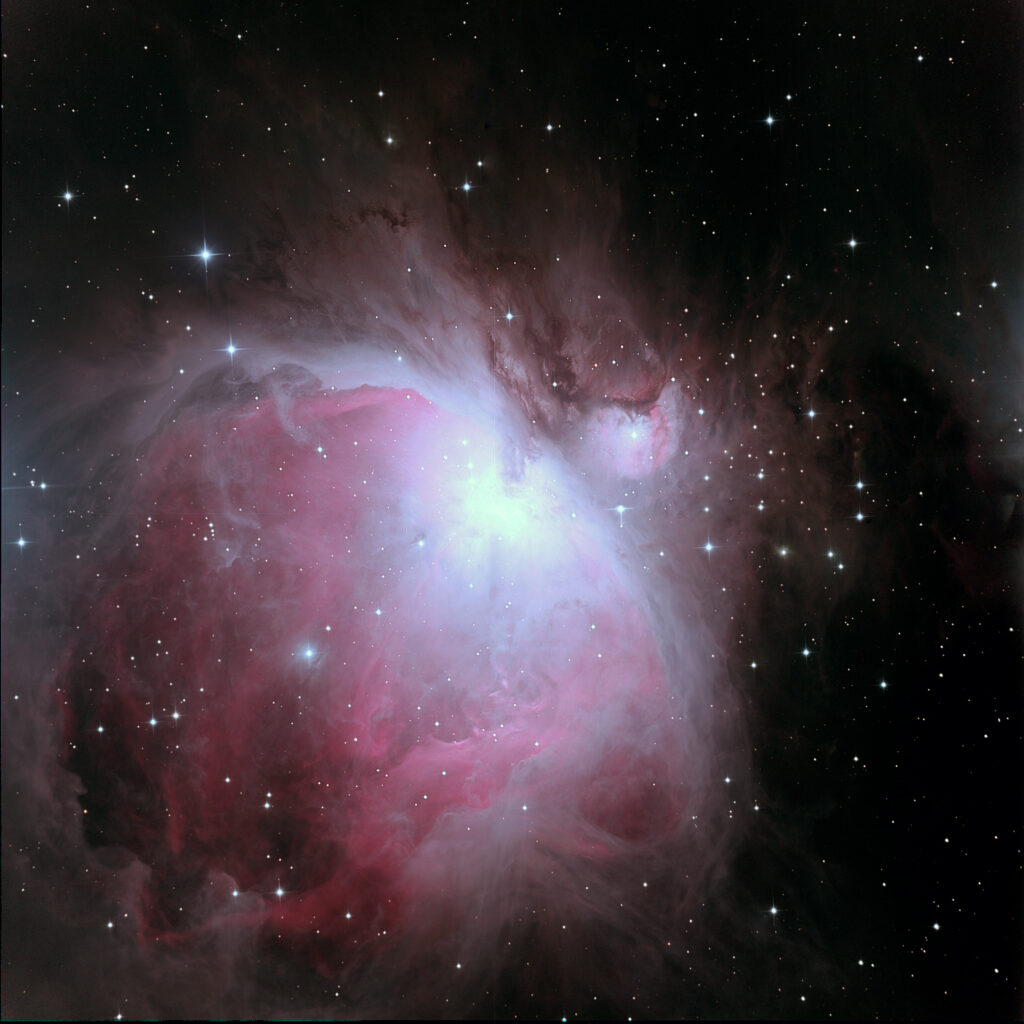The Orion Nebula is an enormous cloud of hydrogen gas spanning 25 light years (150 trillion miles) some 1,500 light years away in the Orion constellation. To put this in perspective, Voyager 1, Earth's only interstellar spacecraft, traveling at a million miles each day, would take 500,000 years to span its width.
The Orion Nebula is visible to the unaided eye as a small nebulosity below the three-star “belt of Orion”. It is one of the most popular targets in amateur telescopes, and probably the most photographed. Amateur astronomer Andrew Common’s 1883 photo of the Orion Nebula is of historic significance, since it revealed for the first time stars and nebulosity never before seen through direct observation with a telescope.
The nebula is an example of an “emission nebula” illuminated by a process similar to a fluorescent light fixture. Electrons stripped from the nuclei of hydrogen atoms by the intense energy of the massive “O class” stars in the center of the nebula quickly recombine with bachelor protons and cascade down the energy levels of the hydrogen atom, emitting photons as they transition down to each level. The transition of electrons from the third to the second energy levels produces a photon with a wavelength of 656 nanometers, which the human eye perceives as red. This phenomenon accounts for the red coloration that dominates this nebula. The bluish-white regions are “reflection nebulae” that do not emit light but rather reflect the energy of the O class stars in the center of the nebula.
The awesome beauty of this object was perhaps best described by Robert Burnham in his Celestial Handbook: "For many it creates . . . the single overpowering impression of primeval chaos, and transports the imaginative observer back to the days of creation. This irresistible impression is more than a poetic fancy, as modern astrophysics now confirms, for the Orion Nebula is undoubtedly one of the regions in space where star formation is presently underway."
As a young man, Sir William Hershel, the great 19th century English astronomer, observed the Orion Nebula through a friend's telescope. It changed his life and made astronomy a lifelong passion. Every time I view the Orion Nebula I am awed by its immensity and brilliance, and think of how a single glimpse of this object ignited Hershel's lifelong passion for astronomy. Be careful when looking at this object, for it has been known to have had a similar effect on many others!
Siding Spring Observatory NSW Australia
Conditions of Location: Equipment Used:Planewave 20" corrected Dall-Kirkham telescope, FLI PL09000 camera
Processing Used:8 x 2 minutes LRGB for a total exposure of 64 minutes
Distance from Location:1,500 light years
Constellation:Orion
Other Link:

Great pic! I especially like the diffraction spikes!
My mind cannot comprehend the magnitude, but I cannot help but marvel at the magnificence.